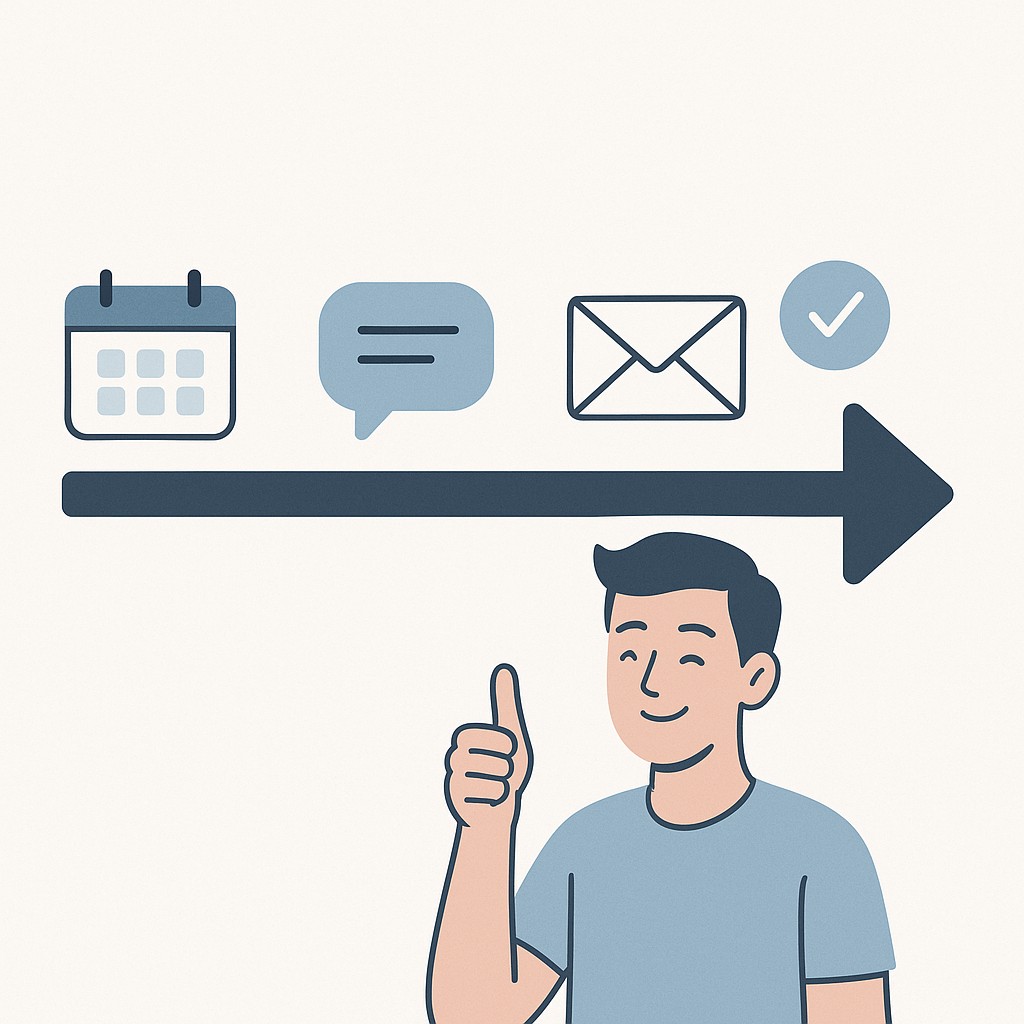Design Respectful Engineering Interview Process: Intent, Momentum, and Trust
Design Respectful Engineering Interview Process: Intent, Momentum, and Trust

The Real Problem with “Long Interview Loops”
After sitting on more than a hundred technical interview panels, the loudest complaint I keep hearing is always the same. “Why is this loop so long?” It’s asked in Slack threads, exit interviews, hurried feedback forms. For a while, I took that at face value. But looking over notes and tracking the outcomes, I noticed something else. People weren’t frustrated by the time itself. They were frustrated by how they felt treated along the way. Interview length was just the symptom, not the disease.
Here’s the most important thing I’ve learned: design a respectful engineering interview process so respect—not length—is the core issue. The number of rounds isn’t what erodes trust or burns out candidates. It’s disrespect. Vague criteria, unclear intentions, a shifting process—these are what leave people feeling disposable.
I’ve watched candidates invest hours into processes where the criteria weren’t clear, communication was spotty, and steps just repeated the same evaluation. Every one of those interviews stalled momentum and drained trust. Even short loops can leave people frustrated when they don’t know what’s about to happen, or worse, why those extra steps exist at all.
A workable technical loop doesn’t pivot on speed or tradition. Instead, design humane hiring loops to show clear intent. Make your criteria explicit, offer proactive updates, cut any step that doesn’t help you make a real decision. That’s how you get interview feedback that’s consistent and usable. Candidates know what’s coming, panelists deliver comparable signals, and momentum holds up.
The best interview loops aren’t short or long. They’re deliberate.
Operationalizing Respect: Momentum, Communication, and Trust
Think of an interview loop as having its own rhythm. The heartbeat is momentum—regular updates, clear expectations, never leaving someone in the dark. Respect doesn’t show up only at the offer stage. It lives in every calendar ping and status email. When you keep candidates in the loop, you build credibility at every step. The effect compounds. When candidates have an exceptional experience, they’re twice as likely to feel their role matches what they were promised during hiring. That’s not just a nice-to-have. It’s a direct line to better outcomes for everyone.

Here’s the reality. Priorities shift. You line up a panel, and then someone’s calendar collides with a product fire. Maybe the designer scheduled to run values interviews has an emergency flight. The easy mistake is to go silent—let “not now” drift into “we’ll circle back soon.” The problem isn’t the delay itself. It’s the vacuum it creates. Candidates don’t expect perfection. They expect clarity.
Six months ago I would have tried to smooth things over with a long “apologies for any inconvenience” message, but these days I’ve found that a five-minute check-in (“We’re rescheduling the panel; expect new dates by Friday”) does more for trust than any apology after the fact. We’ve all been on the receiving end of silence, left refreshing inboxes for news. You don’t need to be flawless. Just honest and proactive.
It’s simple to keep momentum. Follow candidate communication best practices: set a candidate timeline up front, pre-brief at the start of each stage about what’s being evaluated, and send a short status note the same day after any update. Use a template if you want. Small signals, repeated, stack into trust over time.
Once you have that cadence locked in, you can start an intent driven interview design by redesigning the loop itself. Now you can focus on what each round should learn—and who is best equipped to learn it. That’s when intentional loops really start to work.
Design a Respectful Engineering Interview Process: Panels for Decisions, Not Just Assessment
You can’t build a reliable interview loop without a blueprint. The first thing I do with any new panel is sit down and get crisp about what we need to learn. Not just “are they technical?” but which signals matter this time—technical depth, domain fluency, how they collaborate in messy real-world scenarios, whether their values actually match the team’s. Include the people who’ll be in the trenches with them after hiring—the future teammates—by defining structured hiring roles and the signals each role is accountable for. This isn’t just about fairness. It’s about getting input that’ll predict what happens on Monday morning, not just “do they pass the test?”
Here’s how that looks with real structure. Start with a system design interview, framed to probe how a candidate handles trade-offs and constraints. Mix in a domain deep-dive, built to test whether they can turn abstract skills into real applied judgment—does their thinking hold up when the edge cases creep in? Layer in a behavioral interview, where you pay attention to collaboration patterns, conflict, and resilience. Anchor all of it with a scoring rubric that’s spelled out, not hand-waved.
Structure matters here. Structured, question-based scoring led to more valid contextual performance evaluations, and the effect is huge. You get comparable, decision-ready feedback, not just vibes. It’s the difference between “I liked them” and “they showed clear strengths in debugging distributed systems under pressure.” When panels run this way, you stop the post-hoc debate about what a round actually measured, and decisions get sharper.
Think about your interview loop like a signal-processing pipeline. Each stage extracts a new kind of signal—from technical problem-solving to judgment to teamwork—and your scoring rubric compresses that into a metric you can actually compare across candidates. You move from “I think they’re good” to a signal you and your team can trust.
Of course, there’s no magic recipe. Teams, cultures, and roles all vary so calibrations and dry-runs aren’t optional. Uniformity of intent matters more than uniformity of script. What you’re after is clarity, not cookie-cutter panels.
Here’s the payoff. Once you know what matters and who’s best equipped to surface it, you get the confidence to trim everything else out. That’s how a panel turns into a decision engine, not a hurdle course.
Right-Sizing: Cutting Steps Without Cutting Signal
The most common trap I’ve run into—especially in fast-growing teams—is failing to eliminate redundant interviews, capped by that infamous late exec ‘gut check.’ I get why people do it. You want one more opinion, just in case. But adding those extra rounds doesn’t improve your signal. It just layers in bias, dilutes clarity, and—worst of all—can make candidates feel they’re running in circles. Right-sizing isn’t about eliminating depth. It’s about removing duplication and preserving what actually helps you make a decision. The confidence curve backs this up. Google found that four interviews gave 86% confidence in hiring decisions—and more rounds added little, supporting targeted trimming without losing rigor.
Honestly, this reminds me of how our team once tried to redesign our process for system design interviews. We kept tacking on an extra “just one more” slot for various execs—sometimes at the literal last minute, right as the candidate had already invested hours. Inevitably, those late additions didn’t surface new signal. They often muddied the feedback, and we were left arguing after the debrief about “gut feel” versus real evidence. It’s funny, but I sometimes still fall into old habits and want to add “just one more,” even though all the evidence suggests it’s better to hold the line.
Let me digress for a second. This feels a lot like adjusting a recipe. If you cut out all the spices, you end up with something bland and lifeless. But if you dial back that extra pinch of cumin you always toss in just because, the dish gets cleaner and the flavors you care about stand out. Cutting steps isn’t about bare minimum; it’s about removing the noise so the signal comes through.
Here’s the mantra I use when deciding what to trim. If a step doesn’t add a new dimension of evidence or reduce a specific hiring risk or improve how well panels can compare notes, drop it. Cut corners thoughtfully—not the meaningful ones. Ask yourself directly: do we get something new from this, or is it just comfort-zone redundancy? If you’re only repeating the same evaluation in a new format, all you’re generating is more confusion, not more conviction.
Of course, guardrails matter. I’ve learned that short pre-briefs before panels, simple structured scorecards, and brief post-round debriefs hold everyone accountable. These aren’t just formalities. They synchronize judgment across interviewers who may become teammates for years. You set up rituals for coherence and keep rigor as you trim.
Right-sizing isn’t about being ruthless; it’s about running a respectful interview process. It’s about knowing exactly how much care is “enough”—so candidates feel respected, panelists stay focused, and every decision stands on real evidence, not comfort or tradition.
Built for engineers and AI builders, our app generates AI-powered drafts for emails, rubrics, and status updates that match your goals, constraints, and tone, helping you send clear, respectful communication fast.
Ending Loops Well—Momentum, Care, and Scalability
Ending an interview loop isn’t just closing out paperwork or pressing send on a decision email. It’s a moment that can either confirm trust or shatter it. I tell panels. Summarize what you learned, explain the decision in actual words, and—no matter the outcome—end with clarity and care. Thoughtful rejections beat form letters every single time. Don’t ghost anyone. Don’t “circle back later.” A plain, honest message shields your reputation more than canned HR templates ever will. You wouldn’t want to be left guessing about where you stand. Neither do they.
There’s this fear I hear constantly—that real structure must mean more meetings, slower offers, and pain every time you try to coordinate across teams. But I’ve seen the opposite. Structure creates shared language and cuts out rework, which means what feels slower up front almost always saves you cycles later. When everyone knows what’s being measured and why, you skip the debate and get back those lost hours.
Scaling respectful loops actually becomes simple when you focus on the mechanics required to design a respectful engineering interview process. Reusable templates save you time. Shared scoring rubrics turn opinions into data. Interviewer training keeps standards up. And regular cadence check-ins catch misalignments before they become months-long detours. You can trust the process because structure turns quality into something you can carry across teams, not just hope for.
Closing the loop wasn’t ever about counting rounds. It’s about whether your process was anchored in intent and respect—from the first outreach to the last reply. That recipe metaphor I wandered into earlier—having just the right ingredients—ends up mattering here too. Maybe stop asking “how many?” and start asking “how well?”
I still wonder sometimes how much structure is too much, and whether there’s a point at which even the best systems lose the plot. Maybe I haven’t really settled on the right answer yet. But I do know that the best loops I’ve seen treat candidates as future teammates, not test subjects. And that’s a good start.
Enjoyed this post? For more insights on engineering leadership, mindful productivity, and navigating the modern workday, follow me on LinkedIn to stay inspired and join the conversation.
You can also view and comment on the original post here .
